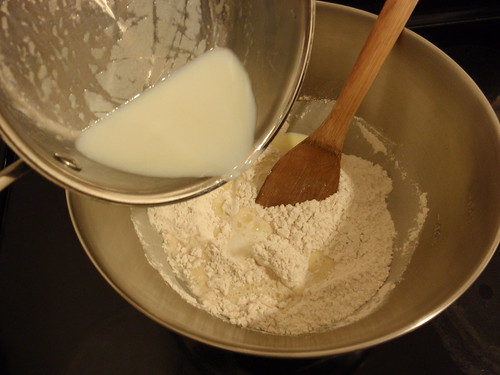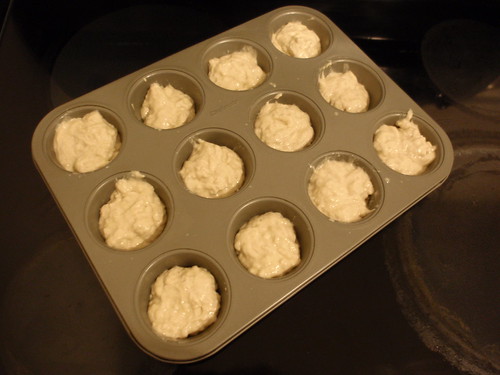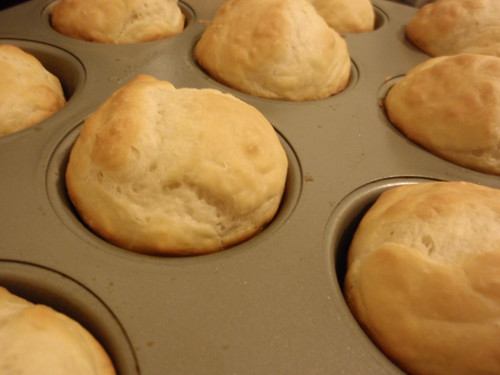This is from the May 26, 1888 edition of
Good Housekeeping, which called itself a fortnightly journal at the time.
Use one pint of milk, one generous quart of flour, one teaspoonful of salt, two tablespoonfuls of butter, one tablespoonful of sugar, one-fourth of a cupful of yeast, and two eggs.
This is for two dozen muffins (seem more like rolls to me). I cut the recipe in half and used a package of yeast. A package of yeast would probably work just as well for a full recipe, too.
Put the flour, salt and sugar in a deep earthen bowl. Boil the milk and add the butter to it.

Let this mixture stand until only tepid, then add the milk, butter and yeast to the flour and beat well.

Cover the bowl and let it stand in a rather cool part of the kitchen, unless the weather be very cold, in which case it will be necessary to keep the bowl in a warm place. When morning comes the batter will be found to have risen to a light sponge.

Beat the two eggs till very light and add them to this sponge, beating them in well. Half fill well buttered muffin-pans with the batter;

cover, and let the muffins rise in a warm place for one hour. Bake for half an hour in a moderately quick oven.
I let the muffins rise in a warm oven, uncovered (I worried the batter would stick to a towel), for about an hour. I guessed 350 degrees F was a moderately quick oven.

These muffins should not be set to rise before nine o'clock at night. They are nice for luncheon or tea, but when they are intended for luncheon use almost twice as much yeast as you other, wise would. With the quantity of materials stated above two dozen muffins can be made.
They tasted like yeasty biscuits. They were good with butter and jelly. You could also probably mix in herbs or other ingredients when you stir in the eggs just before the final rise.





1 comment:
They look like biscuits, too. Yum! I'm a fan of a moderately quick oven. Slow and stupid ovens have no place in my home.
Post a Comment